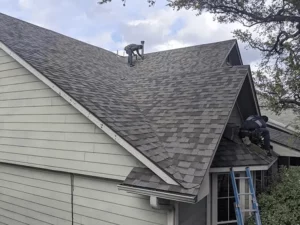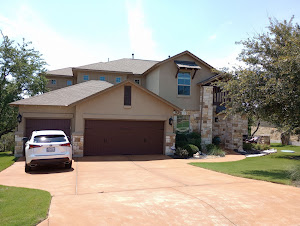
Roof installation is a crucial part of any construction project, whether residential, commercial, or industrial. A well-installed roof is not just a protective layer against harsh weather like rain, snow, and heat, but it also adds to the overall look and value of the building. However, roof installation in Leander is not as simple as it might seem. It involves detailed planning, choosing the right materials, and executing the installation with precision. This article will break down the steps of roof installation, highlighting what to expect throughout the process and offering advice on how to avoid common issues.
Understanding the Basics of Roofing
Before diving into the process of roof installation, it’s essential to understand the basics of roofing and why it’s so important. Choosing the right roofing materials can make a significant difference in the long-term durability and appearance of your roof.
Types of Roofing Materials:
- Asphalt Shingles: One of the most popular roofing choices, asphalt shingles are affordable, easy to install, and available in a variety of colors. However, they are not as durable as other materials and typically last around 20-30 years.
- Metal Roofing: Metal roofs are gaining popularity because of their durability and ability to withstand severe weather conditions. They can last 50 years or more, although they can be more expensive upfront.
- Slate Roofing: Known for its elegance and long lifespan, slate roofing is resistant to fire, insects, and rot. However, it is expensive and requires professional installation.
- Tile Roofing: Tile roofs are excellent for hot climates, as they keep homes cool and are very durable. But they may not be suitable for areas with heavy snowfall or harsh winds.
When selecting the right material for your roof, consider your home’s style, your local climate, and your budget. For example, a metal roofing installation might be perfect in areas prone to wildfires, while tile roofing is great for hot regions but might not perform well in places with heavy snow.
The Process of Roof Installation
This process involves several key steps, each of which is critical for ensuring a successful roofing project.
Step 1: Initial Inspection and Estimate
The first step in any roof installation project is the initial inspection. A roofing contractor will assess the existing roof’s condition to determine if it needs to be replaced or repaired. They will also check the structure underneath, ensuring it can support the new roofing material. Based on this assessment, they will provide an estimate of the cost and timeline for the project.
Step 2: Removal of Old Roofing
In most cases, the old roofing will need to be completely removed before installing a new roof. While some materials can be installed over an existing roof, it’s generally best to start fresh. Removing the old roof ensures that there is no damage to the new roofing materials from existing problems like leaks or mold.
Step 3: Installation of Underlayment
Once the old roofing is removed, the next step is the installation of an underlayment, or roofing felt. This layer serves as an additional protective barrier against the elements. It also ensures a smoother surface for installing the new roofing materials.
Step 4: Installation of the New Roof
Now comes the exciting part—the installation of your new roof. Whether you’ve chosen asphalt shingles, metal roofing, or any other material, this step involves carefully laying down each layer and securing it. The roofing crew will ensure that each piece is properly aligned and fixed in place to ensure the roof’s durability and longevity.
Step 5: Final Inspection
After the installation is complete, a post-installation inspection is carried out. This inspection ensures everything has been installed correctly, and there are no issues with leaks, ventilation, or structural problems. This final check helps guarantee the roof’s quality.
What to Expect During the Roof Installation
The actual day of roof installation can bring some changes to your home environment, so it’s essential to be prepared.
Timeline
The duration of the roof installation depends on various factors such as the size of your roof, the materials used, and the weather conditions. On average, a roof installation or residential roof installation may take anywhere between one to three days. However, larger or more complex installations may take longer.
Noise and Disruptions
Roof installation is a noisy process, and there will likely be disruptions throughout the day. Expect to hear hammering, nail guns, and possibly machinery. If you’re sensitive to noise, it may be a good idea to plan an outing or make arrangements for staying elsewhere while the roofing work is underway.
Safety Precautions
Roof installation is a high-risk job, so safety is always a priority. Professional roofing contractors should follow all necessary safety protocols, including the use of safety harnesses, hard hats, and appropriate footwear. Additionally, they might set up netting or guardrails around your home to prevent any debris from causing damage or injury.
Clean-Up Process
Once the installation is complete, the roofing team will thoroughly clean the area. They’ll remove old roofing materials, debris, nails, and other items that may have been left behind. Special magnetic tools are often used to ensure that all nails are picked up, keeping your yard safe from potential injury or damage.
Potential Issues During Roof Installation
Although roof installation is typically a smooth process, several issues can arise that might delay or complicate things. Being aware of these potential issues can help you prepare for them.
1. Weather Delays
One of the most common setbacks during roof installation is bad weather. Heavy rain, high winds, or unexpected storms can delay the installation process for safety reasons. Planning your roof installation during a season with mild weather can help reduce this risk.
2. Structural Damage
Sometimes, once the old roof is removed, contractors may uncover structural issues like rotting wood or damaged sheathing. These problems must be fixed before the new roof can be installed, which can extend the project timeline. To avoid surprises, it’s essential to schedule a pre-installation inspection to address these issues beforehand.
3. Material Delivery Delays
Delays in the delivery of materials are another potential issue. Weather, transportation problems, or supply shortages can delay the arrival of roofing materials, which can slow down the installation process. Ordering materials well in advance and using a reliable supplier can help mitigate these issues.
Post-Installation Maintenance
After the roof installation is complete, maintaining your new roof is crucial for extending its life and performance. Regular roof maintenance is key to ensuring your roof remains in good condition for years.
Regular Inspections
It’s recommended to inspect your roof at least twice a year—typically in the spring and fall. These inspections will help you spot any early signs of damage, such as missing shingles or cracks, and allow you to address the issues before they become major problems.
Cleaning and Gutter Maintenance
Keeping your roof clean and free from debris is vital. After storms, clear out any branches, leaves, or other debris that might accumulate on the roof. Gutter cleaning is equally important to prevent water buildup, which can lead to leaks and water damage.
Trimming Nearby Trees
Overhanging branches can pose a threat to your roof by scratching or falling onto it during a storm. Regularly trim any trees near your home to reduce the risk of damage to your roof.
Proper Ventilation
Proper attic ventilation is another important aspect of roof maintenance. Good ventilation prevents moisture buildup, which can cause the roof to deteriorate from the inside. Ensure your attic is properly ventilated to keep your roof in good condition.
Professional Assistance
While many roof maintenance tasks can be handled by homeowners, some issues require professional help. If you notice significant damage like leaks, missing shingles, or water stains, it’s time to call a roofing contractor. They have the tools and expertise to safely assess and repair any damage.
Conclusion
Roof installation is a critical task that requires skill, attention to detail, and the right materials. From the initial assessment to the final inspection, each step in the process plays a crucial role in ensuring your roof is installed correctly and will last for years. While there may be challenges along the way—such as weather delays or unexpected structural damage—these can be managed with proper planning and the help of a reputable roofing company.
If you’re looking for a reliable residential roofing company, consider working with Anderson Roofing & Construction LLC. They are known for their high-quality craftsmanship and dedication to customer satisfaction. Whether you need metal roofing installation, roof repair, or a full roof replacement, Anderson Roofing & Construction LLC is equipped to handle all your roofing needs. Contact them today to get started on your next roofing project!
Name, Address, and Phone
Anderson Roofing & Construction LLC
2503 Claudia Dr, Leander, Texas, 78641, US
737-324-7371
Socials






